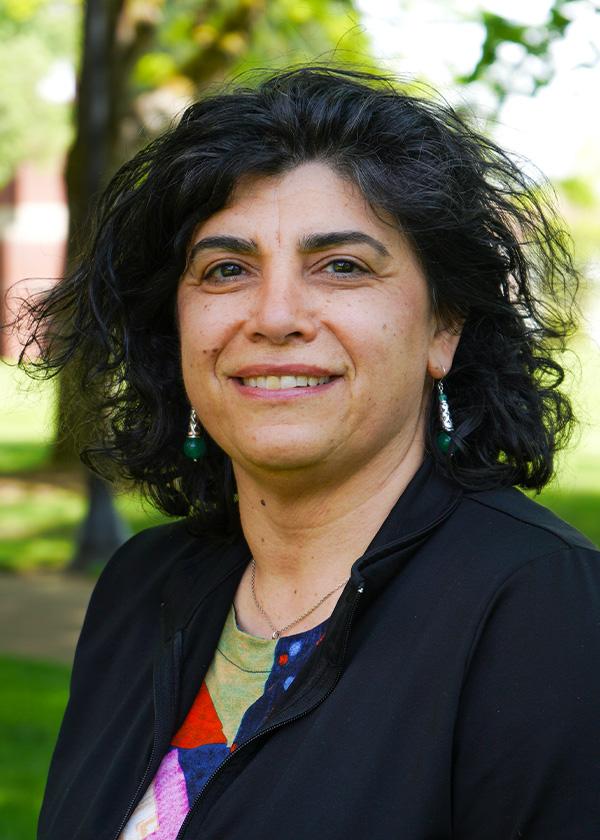
Elisar J. Barbar
Elisar J. Barbar
Research
Structure, Assembly, and Regulation of Dynamic Protein Complexes:
The Barbar lab focuses on elucidating molecular processes that govern protein networks involving intrinsically disordered proteins (IDPs). Our approach includes characterization of protein assemblies using a combined analysis of structure obtained by NMR, crystallography, and electron microscopy; binding thermodynamics obtained by isothermal titration calorimetry (ITC), hydrodynamics obtained by small angle X-ray scattering (SAXS) and analytical ultracentrifugation (AUC), and dynamics obtained by NMR.
In addition to structural and biophysical studies, our lab combines molecular and cell biology, and animal models to understand fundamental cellular functions of protein complexes in biomedically relevant systems.
Dynein Structure and Regulation:
Cytoplasmic dynein is a 1.6-MDa motor protein complex that uses the energy of ATP hydrolysis to translocate along microtubules and carry cargo from one subcellular locale to another. This transport is essential for myriad processes, including chromosome segregation during mitosis, axonogenesis, and movement of vesicles. The dynein region responsible for cargo binding is a subcomplex of multiple subunits, a key component of which is dynein intermediate chain (IC), whose intrinsically disordered N-terminal 300-amino acid domain, N-IC is the hub of most dynein activity. Our lab has determined the structures of individual subunits and their interactions with IC as well as with non-dynein regulatory proteins such as dynactin and the nuclear distribution protein (NudE).
We use multidisciplinary approaches including NMR spectroscopy of flexible domains, negative stain electron microscopy of stable and dynamic complexes, synthetic biology, molecular dynamics simulations, molecular genetics, and organismal biology to provide new and significant advances in the structural biology of the dynein cargo attachment subcomplex and its regulatory processes. The cell-based and organismal studies complement our structural work and give functional insight into these interactions.
LC8 Hub Interaction Network:
In 2008, we proposed a paradigm-shifting hypothesis that a protein called LC8, which was originally identified as a dynein light chain, and now shown to interact with more than 100 different proteins, is a central hub enabling dimerization and structural organization of disordered binding partners that function in many non-dynein systems as well as in dynein. Since then the concepts of hub protein networks for intrinsically disordered proteins have become central research concepts that are reshaping the way cellular processes are understood. Among LC8 partners studied in the lab are: Dynein Intermediate Chain, Ebola, rabies virus phosphoprotein, Transcription factor ASCIZ, mitotic protein Chica and 53 binding protein.
SARS-CoV-2 nucleocapsid protein:
The nucleocapsid protein (N) of SARS-CoV-2 contains an independently folded monomeric N-terminal domain (NTD) that is the primary site for RNA binding, and a dimeric C-terminal domain (CTD) that is essential for efficient phase separation and condensate formation with RNA. While a lot of work has focused on these two structured domains, we focus on the full length protein, its binding to RNA, and how changes in the Ser/Arg-rich disordered linker affects viral assembly, RNA binding and condensate formation.
NMR Developments
In the process of elucidating structure/function of large disordered proteins, we develop innovative NMR approaches for mapping functional interactions in highly dynamic protein machines. My lab has spearheaded the recent successful effort for funding of major instrumentation grants for a multi-user 800 MHz NMR, which is the highest field NMR in the state of Oregon. Nuclear Magnetic Resonance Facility High-powered nuclear magnetic resonance instrument to draw regional, national, and international scientists to OSU.
Research Interests
- Structure, Assembly, and Regulation of Dynamic Protein Complexes
- Dynein Structure and Regulation
- LC8 Hub Interaction Network
- NMR Developments
Education
Ph.D. 1989-93, Portland State University
Postdoc 1993-97, University of Minnesota
At OSU since 2004
College strategic research areas
Biomedical ScienceAwards
- F.A. Gilfillan Award for Distinguished Scholarship in Science, 2024
- The Gender Equity in Leadership Award from the College of Science, 2023
- Inaugural College of Science Impact Award, 2017
- The Albert Szent-Györgyi Nobel Lecturer, Budapest, Hungary, 2017
- Milton-Harris Exceptional Achievement in Basic Research, 2014
- Erskine Fellow, University of Canterbury, 2014
- Invited Chair, Université Joseph Fourier, Grenoble, France, 2011
- The Henry Dreyfus Teacher-Scholar Award, Honorable mention, 2003
- NSF CAREER awardee, 2003
- NIH Postdoctoral fellow, 1995-96



